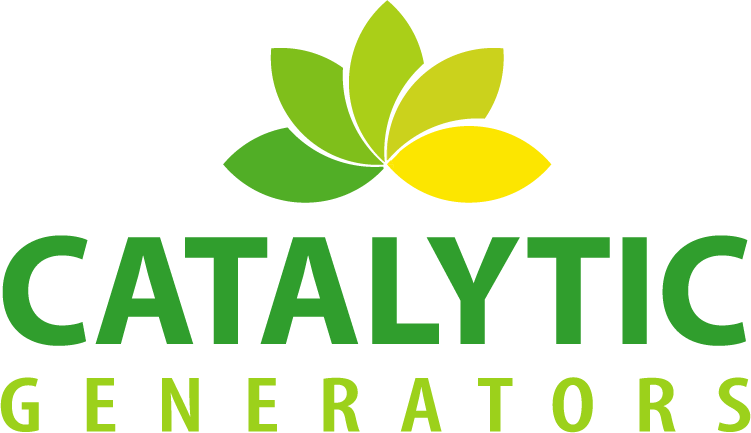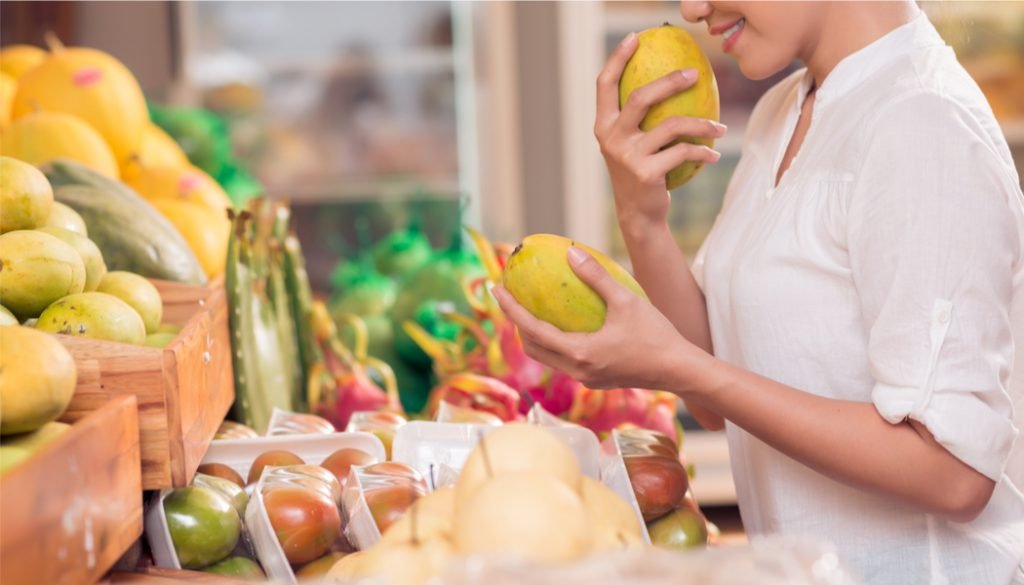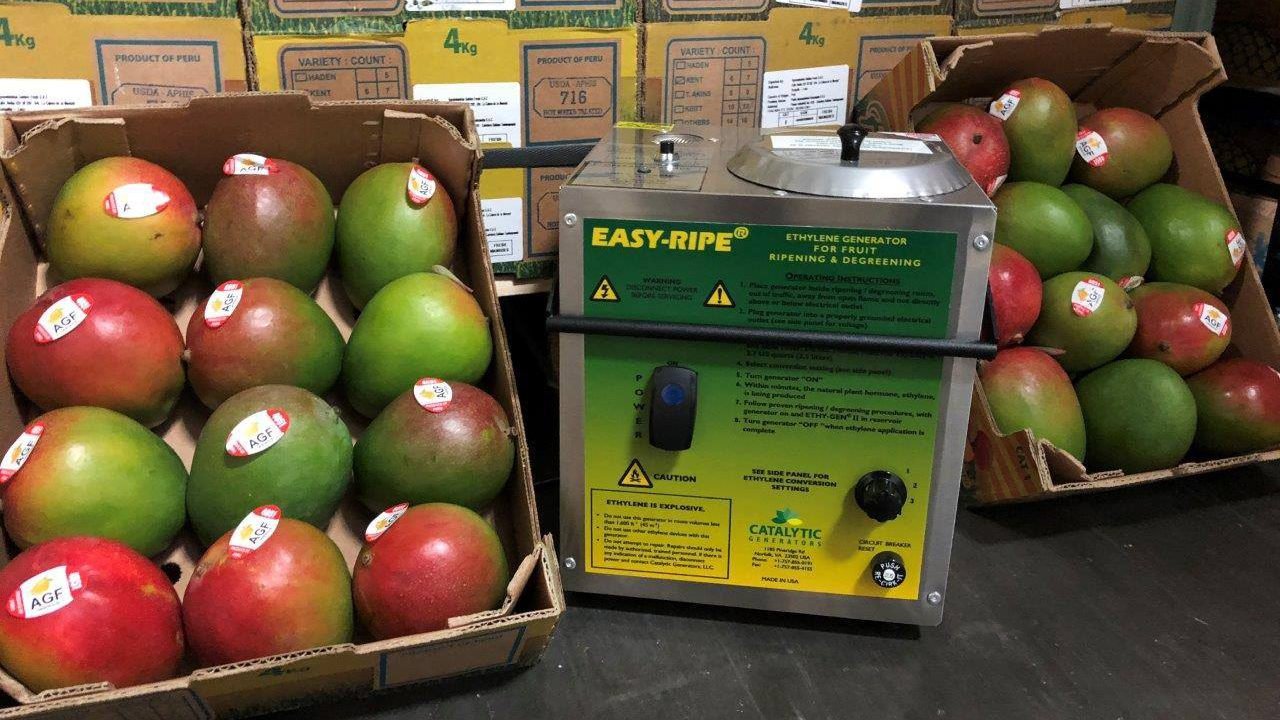Ready to Eat Mangos Increase Sales
The National Mango Board has recently partnered with Catalytic Generators to explain how a ripening mango program may work.
Similar to how ripening has impacted the world of avocados, bananas, pears, kiwis, and other produce items, it has completely revolutionized the mango industry. The National Mango Board, working alongside produce professionals, has determined that ripening protocols, sometimes called pre-conditioning, have had a positive impact on consumer satisfaction and sales for ripened fruit. “We have seen retailers who have converted to the ripening program sustain increases in volume, said Tammy Wiard, retail marketing manager for the National Mango Board.
University of California-Davis conducted in-store consumer tests on behalf of the National Mango Board indicating that consumer acceptance doubles, increasing from approximately 39% for mature/unripe mangos to 87% for the same fruit ripe/ready to eat¹. “The proper use of the mango ripening protocol, educational, and promotional programs may increase consumption, increase sales, and benefit overall consumer health,” said Manuel Michel, executive director of the National Mango Board. “Consumers have said time and time again that they prefer the taste and quality of fruit that has been through ripening programs. They constantly boast that they look forward to purchasing from those particular retailers again.”
In previous years, retailers focused on the longest shelf-life possible to avoid spoilage or waste, save on costs, and make the most sales. There is irony in this way of thinking, though, as a multitude of data proves that the expense of an ethylene ripening program to provide consumers with ripe, ready to eat fruit will help increase sales tremendously.
“We believe the additional time, effort and minimal investment involved in ripening mangos provides the best quality fruit and customer satisfaction,” said Greg Akins, President & CEO of Catalytic Generators.
Receiving And Quality Assessment
One of the most important steps in developing a successful mango ripening program is to receive mangos that were harvested mature. Fruit that was harvested immature will soften but will not develop a pleasing flavor, and ripening does not help an immature mango reach a satisfactory eating quality. For this reason, understanding mango maturity and ripeness indicators are essential to mango handling and ripening protocols.
At harvest, mangos are high in starches and acids, and low in soluble solids / sugars. During ripening, mature mangos undergo several significant changes: with a decrease in firmness, fruit sugars increase while acidity and starch concentrations decrease. Internal flesh color will also develop from pale yellow to deep golden yellow. Maturity at harvest and throughout the ripening process can be judged by a combination of factors, including flesh color, firmness, SSC (soluble solids concentration), dry matter, and fruit shoulder shape.
The National Mango Board’s research team and partners have developed a five-stage Mango Maturity and Ripeness Guide (MMRG²) for the six most common commercial mango varieties sold in the United States. The guide provides internal flesh color, corresponding ranges for SSC, and firmness for each state. The recommendation is that at least 90% of the mangos tested in a shipment should fall in stage 2 or higher to be accepted.
Mango Expectations At Receiving
Mangos are harvested when mature (firm), but not ripe or ready to eat (soft)
A mature mango will ripen normally with increasing percentage of soluble solids concentration (SSC) and decreasing starch and firmness (pounds force) to become flavorful and ready to eat
After receiving, move fruit directly to store between 50°F to 54°F (10°C to 12.2°C) depending on the variety of mango. Do not allow the fruit to sit out on the dock where it may become too cold or too warm. The same rule applies for outgoing fruit.
At this point, an assessment can be made to determine if the mangos will benefit from further ripening.
Mango quality should be checked at all stages of the supply chain to ensure that the fruit was harvested at the correct maturity and will ripen to a ready to eat state that will satisfy consumers. Quality Assurance professionals can reference the Mango Postharvest Best Management Practices Manual available in English and Spanish.
The Ripening Process
Catalytic Generators’ ethylene generators and Ethy-Gen® II Ripening Concentrate form a system that, when used as directed, produces concentrations ideal for conditioning a variety of mangos. Since mangos produce ethylene naturally, this makes the use of this natural ripening hormone safe and effective. A mature mango will respond to the externally applied ethylene by producing its own ethylene and ripen normally. Ripening programs benefit from using safe and effective ethylene generators to move mangos toward the ripe and ready to eat stage prior to store-level distribution.
“Before engaging in a ripening program, the intention to ripen and the required maturity level at harvest should be clearly communicated up the supply chain. It is critical that this be communicated throughout the retail organization,” stated Michel. Key factors in a proper ripening program include temperature management, storage, air flow, humidity, venting, and of course, ethylene application.
Ideal Mango Ripening Conditions
The ripening process is a four-day cycle and temperatures depend on the country of origin and time of year. For more details, please contact NMB partner Dennis Kihlstadius³ at Produce Technical Services.
Relative humidity of 90-95% will reduce potential water loss and mango shriveling
During ripening, carbon dioxide levels should always be kept below 1.0% by exchanging room air with outside air (commonly called “venting”).
Ethylene levels should be kept at 100 parts per million (ppm) for a 24-hour cycle
Ethylene and carbon dioxide levels should be monitored during ripening and vent as needed
Ripening Program Implementation
“Stores who have converted to pre-conditioned fruit have special point of sale materials to successfully communicate the “ripe and ready” fruit,” stated Wiard. Display temperatures, mango quality (internal and external), size of the displays, items stored with mangos, hazards that could affect mango quality, backroom temperatures, rotation system, and staff knowledge are all essential factors when revising or implementing a ripening program. To help ensure success, produce department managers and associates should receive communication and training about the ripe/ready to eat mango program on an ongoing basis.
Stores should increase the frequency of ordering to help keep shipments fresh. The new shipments of conditioned mangos will be softer than what most stores are accustomed to, which means that additional care should be taken in handling and building the displays. Clear signage indicating that mangos are “Ready to Eat” will call the attention of customers, educate them about selection, cutting, and usage. This offers retailers the opportunity to not only help increase sales but educate consumers about the many benefits and advantages of purchasing a ripe mango.
“Providing customers with mangos that are ripe and ready to eat helps lead to repeat sales from retail centers. The increase in mango purchases over the last few years is a clear indication of what consumers are looking for, and that is ripe mangos,” stated Michel.
1 Nassur Rde C, González-Moscoso S, Crisosto GM, Lima LC, Vilas Boas EV, Crisosto CH. Describing Quality and Sensory Attributes of 3 Mango (Mangifera indica L.) Cultivars at 3 Ripeness Stages Based on Firmness. J Food Sci. 2015 Sep;80(9):S2055-63. doi: 10.1111/1750-3841.12989. Epub 2015 Aug 7. PMID: 26257310.
2 For hard copies of the MMRG, please contact the National Mango Board.
3 Ripe mango point of sale display materials provided by the NMB can be found here.



